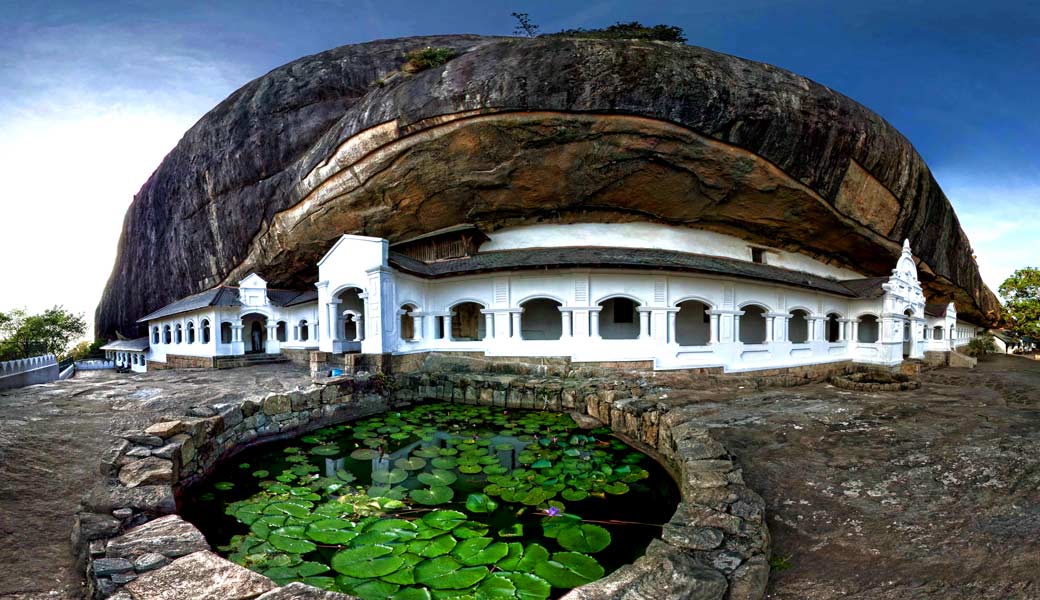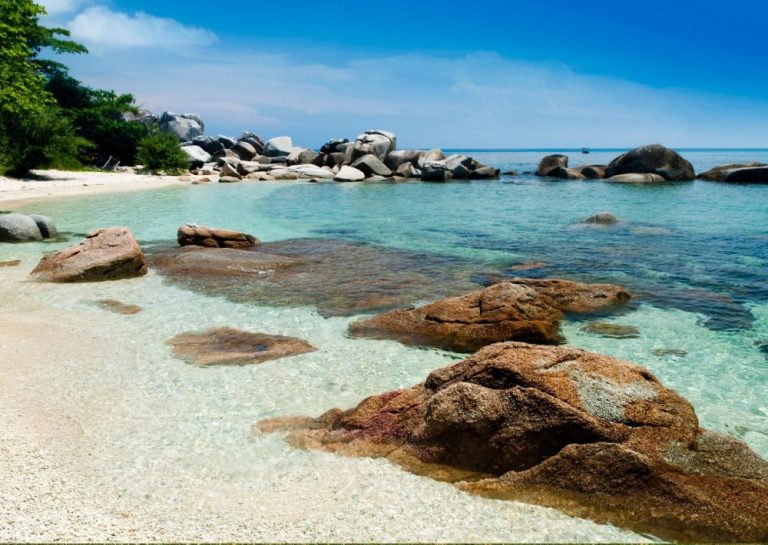Dambulla, Sri Lanka: Dambulla, located in the heart of Sri Lanka, is renowned for its stunning cave temples, a UNESCO World Heritage Site that showcases some of the country’s most impressive Buddhist art and architecture. Nestled within lush greenery, these caves have served as places of worship for centuries. In this article, we’ll explore ten highlights of the Dambulla Cave Temples, revealing why this extraordinary destination should be on every traveler’s itinerary.
Dambulla, Sri Lanka: A Historical Overview
The Dambulla Cave Temples, also known as the Golden Temple of Dambulla, date back to the 1st century BCE. Originally used as a refuge for King Valagamba during his reign, these caves have been transformed into a majestic complex of temples adorned with intricate murals and statues. Over the centuries, many rulers and devotees have contributed to the site, making it a rich tapestry of history and culture.
Dambulla, Sri Lanka: The Five Main Caves
The Dambulla Cave Temple complex consists of five main caves, each offering a unique experience. The caves vary in size and contain a plethora of Buddha statues, paintings, and other religious artifacts. Visitors can explore these spaces to admire the artistry and spirituality that permeates the entire site.
The Giant Buddha Statue
One of the most iconic features of the Dambulla Cave Temples is the enormous statue of the reclining Buddha. Measuring 14 meters long, this impressive figure is a striking representation of Buddha in his final moments before entering Nirvana. The intricate details of the statue, including the serene expression and the meticulously crafted folds of the robe, are awe-inspiring and attract numerous visitors.
Stunning Murals and Artwork
As you navigate through the caves, you will encounter exquisite murals that cover the walls and ceilings. These vibrant paintings, depicting various scenes from the life of Buddha, illustrate the rich cultural and religious history of Sri Lanka. The use of vivid colors and intricate designs showcases the artistry of ancient Sri Lankan craftsmen, making the cave temples a visual feast.
The Cave of the Great Kings
One of the most significant caves within the complex is the Cave of the Great Kings. This cave features impressive murals and numerous Buddha statues, including a striking figure of Buddha seated in meditation. The Cave of the Great Kings is a testament to the dedication of the artists who created these masterpieces and provides a serene space for meditation and reflection.
Religious Significance
The Dambulla Cave Temples are not just historical landmarks; they are active places of worship. Pilgrims and monks continue to visit the site, performing rituals and prayers. This living tradition adds a profound layer of spirituality to the experience, inviting visitors to engage with the sacredness of the space.
Accessibility and Visitor Facilities
Dambulla is conveniently located near major tourist hubs like Sigiriya and Kandy, making it easily accessible for travelers. The site is well-equipped with visitor facilities, including parking, guided tours, and informative signage. The blend of accessibility and historical significance ensures that visitors can explore the caves comfortably.
Breathtaking Views
The location of the cave temples atop a rocky hill provides breathtaking panoramic views of the surrounding countryside. Visitors are treated to a stunning vista of lush greenery, rice paddies, and distant mountains. The view from the top, particularly at sunrise or sunset, is a breathtaking sight that enhances the overall experience of visiting Dambulla.
Dambulla, Sri Lanka: The Influence of Ancient Sri Lankan Architecture
The architectural style of the Dambulla Cave Temples reflects the ingenuity of ancient Sri Lankan builders. Carved directly into the rock, the caves are a remarkable example of rock-cut architecture. The seamless blend of natural and constructed elements showcases the skill of artisans who worked tirelessly to create this magnificent site.
Dambulla, Sri Lanka: Local Culture and Cuisine
A visit to Dambulla also offers a chance to immerse yourself in the local culture. The town is home to vibrant markets, traditional crafts, and delicious Sri Lankan cuisine. After exploring the temples, visitors can indulge in local dishes such as rice and curry or fresh fruit juices from nearby vendors. The warmth of the local community enhances the overall experience, leaving a lasting impression on travelers.
Conclusion
Dambulla, Sri Lanka: Dambulla’s cave temples are a remarkable destination that beautifully encapsulates the spirituality, history, and artistry of Sri Lanka. With their stunning murals, impressive statues, and serene atmosphere, the temples provide an unforgettable experience for visitors. Whether you’re a history buff, a spiritual seeker, or simply someone looking to explore the wonders of the world, the Dambulla Cave Temples offer something for everyone. Plan your visit today and immerse yourself in the rich heritage of this captivating site.
FAQs
1. How do I get to Dambulla?
Dambulla is easily accessible by car or public transport from major cities like Colombo, Sigiriya, and Kandy. Regular buses and taxis are available for travelers.
2. What is the best time to visit Dambulla?
The best time to visit is during the dry season, from December to April, when the weather is pleasant and ideal for exploring the caves.
3. Are there entrance fees for the Dambulla Cave Temples?
Yes, there is an entrance fee for visitors. Fees may vary for locals and foreigners, so it’s advisable to check in advance.
4. What should I wear when visiting the caves?
Visitors are encouraged to dress modestly, covering shoulders and knees, as Dambulla is a sacred site. Comfortable footwear is also recommended due to uneven terrain.
5. Is it suitable for families with children?
Yes, the Dambulla Cave Temples are family-friendly, and children will enjoy exploring the caves and learning about the rich history and culture of Sri Lanka.
Also read: Thailand to Vietnam: 10 Scenic Routes and Travel Options




Leave a Comment